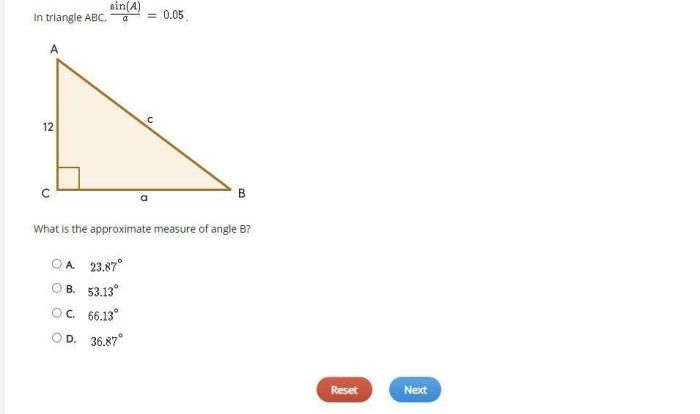Delving into the intricacies of word problems pythagorean theorem answers, this comprehensive guide embarks on an enlightening journey to unravel the complexities of this mathematical concept. From understanding the fundamentals to mastering advanced applications, this discourse unveils the secrets of the Pythagorean theorem, empowering readers with the knowledge to conquer word problems with precision and confidence.
As we delve deeper into the realm of word problems pythagorean theorem answers, we will explore the historical significance of this theorem, its real-world applications, and the common pitfalls that can hinder progress. By providing step-by-step solutions and insightful tips, this guide serves as an invaluable resource for students, educators, and anyone seeking to enhance their mathematical prowess.
Pythagorean Theorem: Understanding the Basics: Word Problems Pythagorean Theorem Answers
The Pythagorean theorem is a fundamental concept in mathematics that relates the lengths of the sides of a right triangle. It states that in a right triangle, the square of the length of the hypotenuse (the side opposite the right angle) is equal to the sum of the squares of the lengths of the other two sides.
The Pythagorean theorem is expressed mathematically as follows:
a2+ b 2= c 2
where aand bare the lengths of the two shorter sides of the right triangle, and cis the length of the hypotenuse.
The Pythagorean theorem has numerous real-life applications, such as:
- Calculating the height of buildings or trees
- Determining the distance between two points
- Solving problems in navigation and surveying
The Pythagorean theorem was first discovered by the Greek mathematician Pythagoras in the 6th century BC. It is one of the oldest and most well-known theorems in mathematics.
Solving Word Problems Using the Pythagorean Theorem
To solve word problems involving the Pythagorean theorem, follow these steps:
- Identify the right triangle in the problem.
- Label the sides of the triangle as a, b, and c, where cis the hypotenuse.
- Write down the Pythagorean theorem equation: a2+ b2= c2.
- Substitute the given values into the equation.
- Solve the equation for the unknown side length.
Here are some examples of word problems with detailed solutions:
Example 1:A ladder is leaning against a wall. The base of the ladder is 3 meters from the wall, and the top of the ladder is 4 meters high. How long is the ladder?
Solution:
- Identify the right triangle: the ladder, the wall, and the ground.
- Label the sides of the triangle: a= 3 meters, b= 4 meters, and c= unknown.
- Write down the Pythagorean theorem equation: a2+ b2= c2.
- Substitute the given values into the equation: 3 2+ 4 2= c2.
- Solve the equation for the unknown side length: c2= 25, so c= 5 meters.
Example 2:A rectangular garden is 10 meters long and 6 meters wide. What is the length of the diagonal of the garden?
Solution:
- Identify the right triangle: the diagonal of the garden, the length of the garden, and the width of the garden.
- Label the sides of the triangle: a= 10 meters, b= 6 meters, and c= unknown.
- Write down the Pythagorean theorem equation: a2+ b2= c2.
- Substitute the given values into the equation: 10 2+ 6 2= c2.
- Solve the equation for the unknown side length: c2= 136, so c= 12 meters.
Common Mistakes and Pitfalls
When solving word problems using the Pythagorean theorem, common errors include:
- Misidentifying the right triangle in the problem.
- Incorrectly labeling the sides of the triangle.
- Making algebraic errors when solving the equation.
- Forgetting to square the side lengths before adding them.
To avoid these errors, carefully read the problem and make sure you understand the geometry involved. Double-check your work and make sure your calculations are correct.
Extensions and Applications
The Pythagorean theorem has numerous applications beyond right triangles. It can be used to:
- Solve problems in trigonometry and geometry.
- Calculate the distance between two points in three-dimensional space.
- Determine the volume of three-dimensional objects.
The Pythagorean theorem is also used in other fields, such as:
- Architecture: to calculate the height of buildings and the length of beams.
- Engineering: to design bridges and other structures.
- Navigation: to determine the distance between two points on a map.
The Pythagorean theorem is a powerful tool that has applications in a wide variety of fields. It is a fundamental concept in mathematics that is used to solve problems in geometry, trigonometry, and other areas.
FAQ Corner
What is the Pythagorean theorem?
The Pythagorean theorem states that in a right-angled triangle, the square of the length of the hypotenuse (the side opposite the right angle) is equal to the sum of the squares of the lengths of the other two sides.
How can I use the Pythagorean theorem to solve word problems?
To solve word problems using the Pythagorean theorem, follow these steps: 1) Identify the right-angled triangle in the problem. 2) Label the sides of the triangle with their given lengths or variables. 3) Use the Pythagorean theorem formula (a^2 + b^2 = c^2) to set up an equation.
4) Solve the equation for the unknown side length.
What are some common pitfalls to avoid when solving word problems using the Pythagorean theorem?
Common pitfalls include: 1) Misidentifying the right-angled triangle. 2) Using the wrong formula. 3) Making algebraic errors. 4) Not checking your answer for reasonableness.
